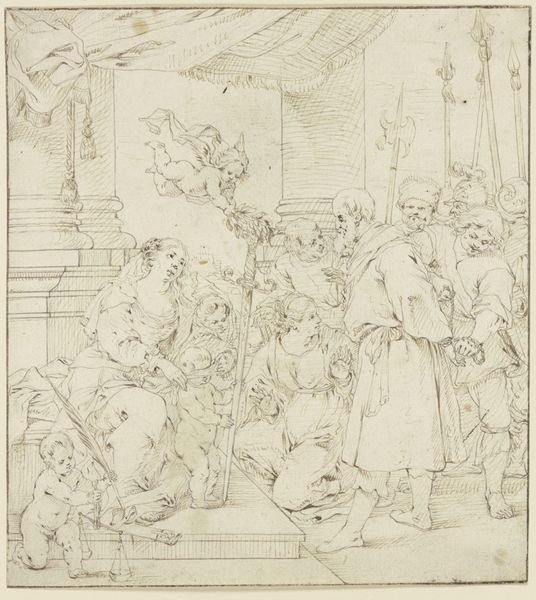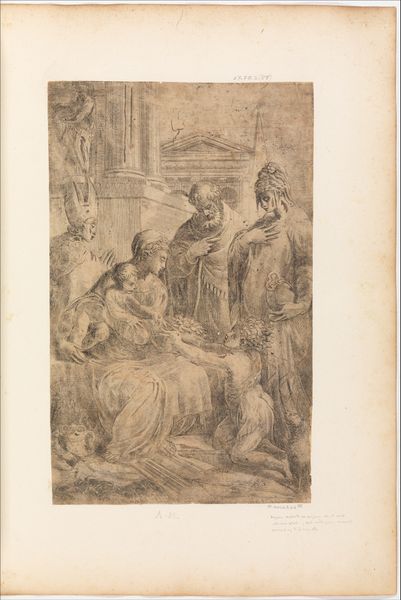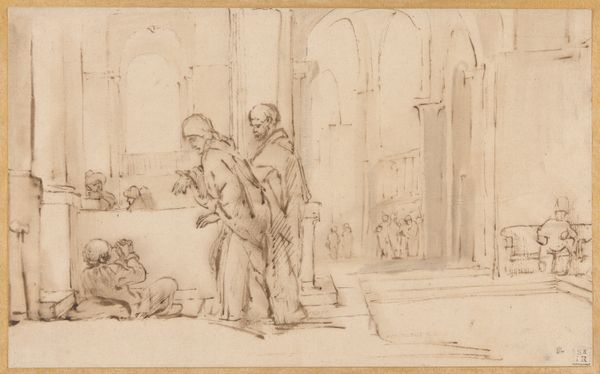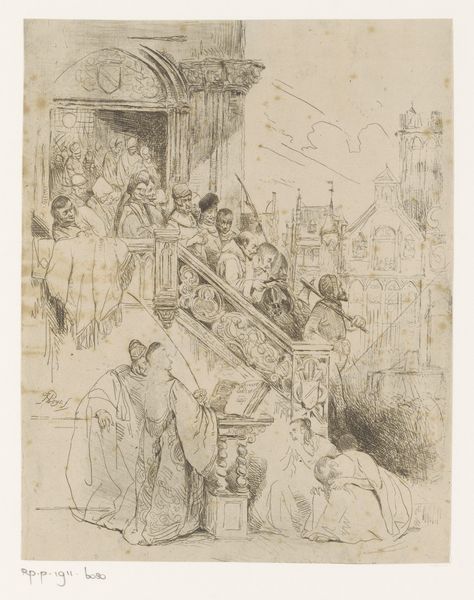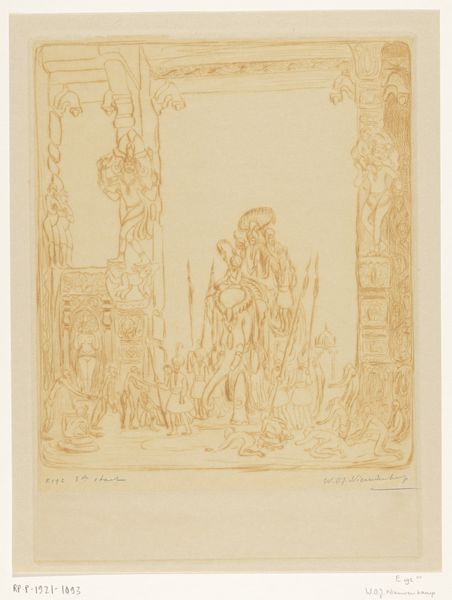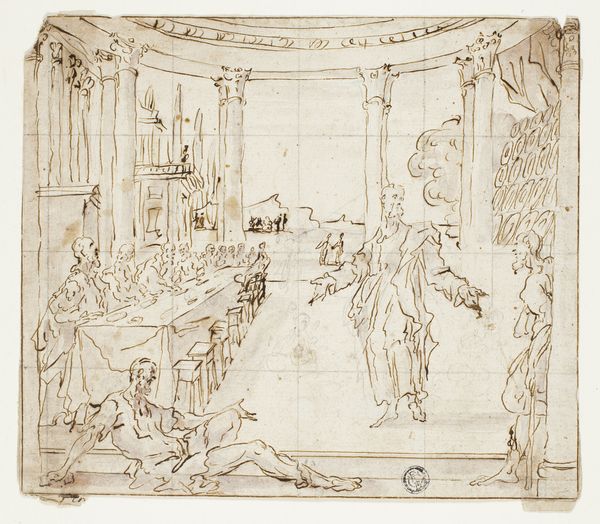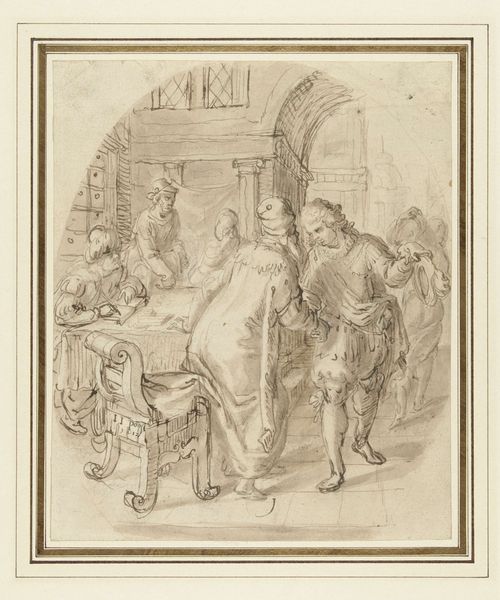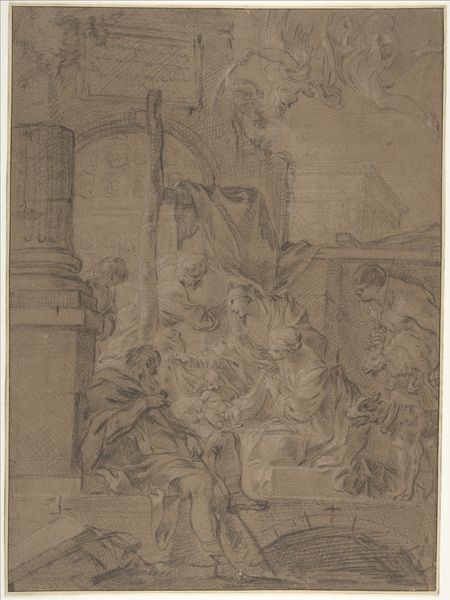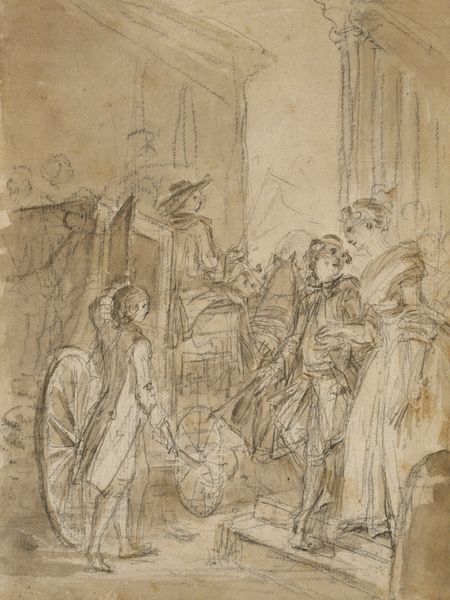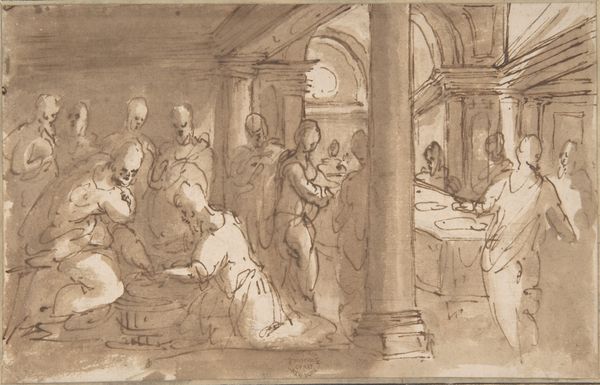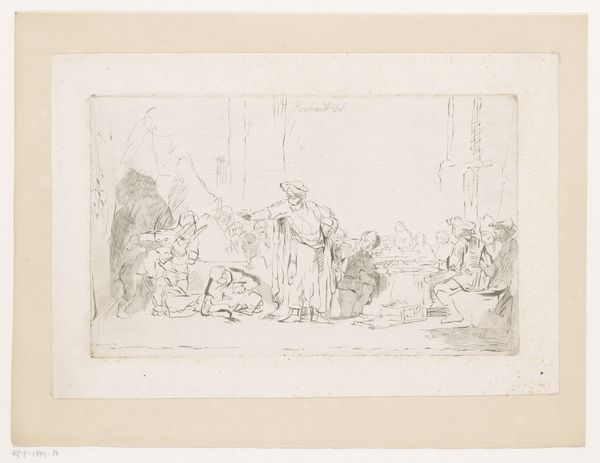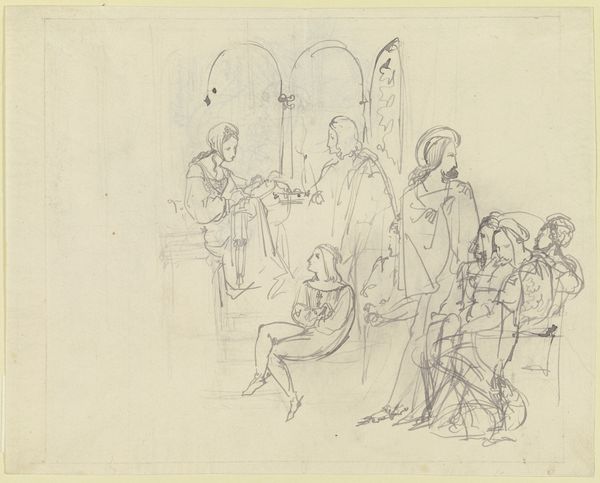
drawing, etching, ink
#
drawing
#
ink drawing
#
etching
#
figuration
#
ink
#
history-painting
#
northern-renaissance
Dimensions: 10 5/8 x 10 3/4 in. (27 x 27.3 cm)
Copyright: Public Domain
Curator: This exquisitely detailed etching by Jan Wellens de Cock, dating from about 1500 to 1527, depicts "Joachim's Offering Refused," a somber scene rendered in ink. Editor: Somber indeed. The closely packed figures, all in various states of distress or disapproval, create a really claustrophobic feel, amplified by the precision of the line work. Curator: Exactly. This depiction comes from the Apocrypha, focusing on Joachim’s rejection at the temple because of his childlessness. You can almost feel the weight of societal expectations bearing down on him, reflected here by the harsh judgement of the temple priest, who's pushing aside the sacrificial animal. Editor: Notice the use of linear perspective here, too; it's almost exaggerated. The orthogonals converge rapidly, forcing the viewer’s eye toward the background. And how cleverly the artist plays with light and shadow despite using minimal strokes, accentuating emotional drama. Curator: It is remarkable for its intricate detailing. De Cock used the print medium as a tool to disseminate religious and moral narratives amongst the emerging middle class of the 16th Century. Prints were more accessible, playing an educational and persuasive function within society. Editor: Even the architectural backdrop plays a part. The high arches and ornate details dwarf the human figures, reinforcing the sense of smallness, their struggles within this grand scheme of divine judgment. The use of vertical lines creates a certain oppressive effect, heightening our discomfort. Curator: The scene is charged with cultural meaning, representing not just religious beliefs but anxieties around lineage, status, and divine favor within that Northern Renaissance society. To be childless, particularly for a man like Joachim who seeks to make a religious offering, meant exclusion from communal respect. Editor: In short, the careful deployment of linear and tonal elements magnifies our connection with Joachim’s anguish and emphasizes the overall sense of spiritual disquiet. Curator: It reveals a lot about how religious doctrine shaped social status during this historical era. Editor: It makes you admire how De Cock so skillfully wielded line and form. The drawing is very thought-provoking!
Comments
No comments
Be the first to comment and join the conversation on the ultimate creative platform.
